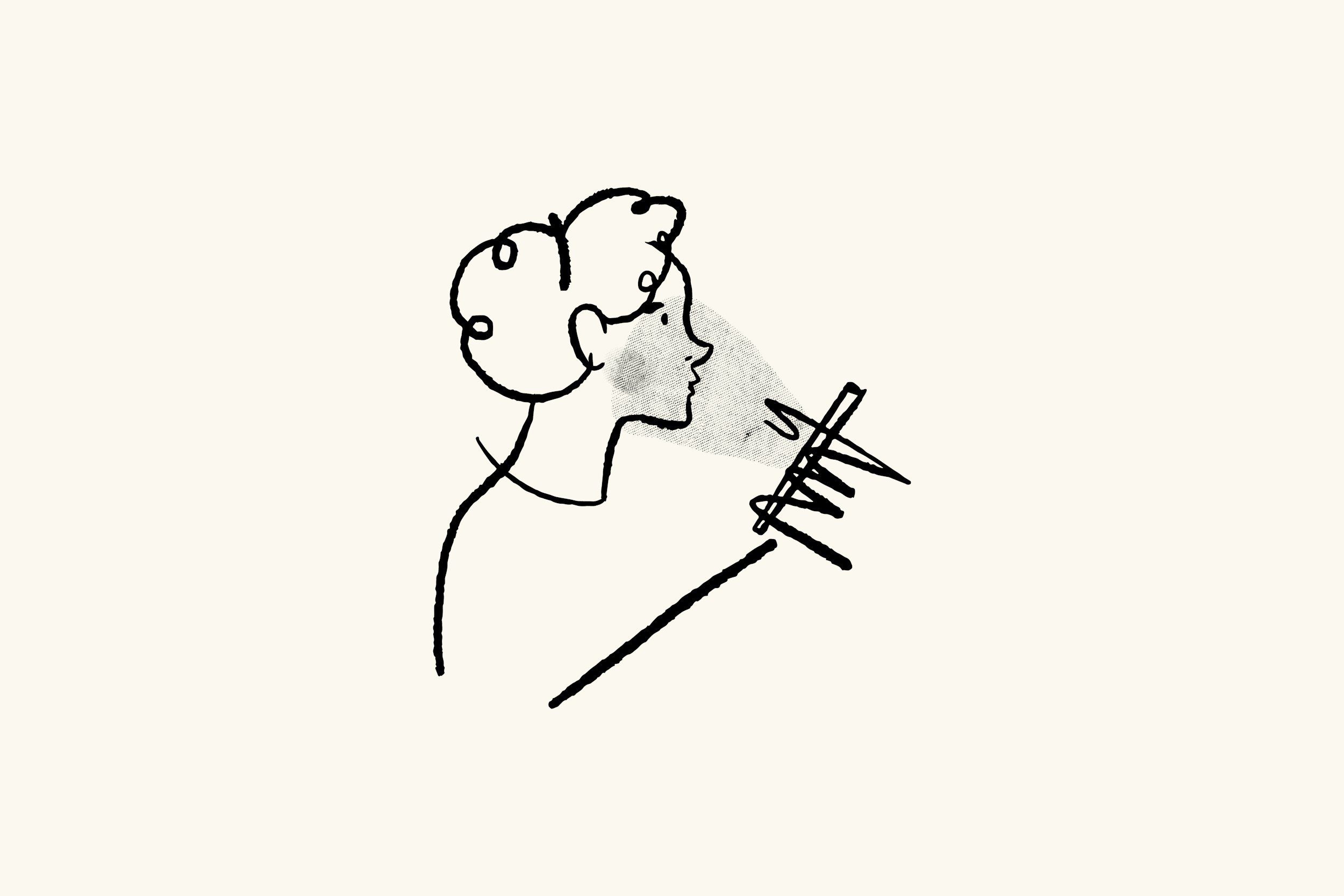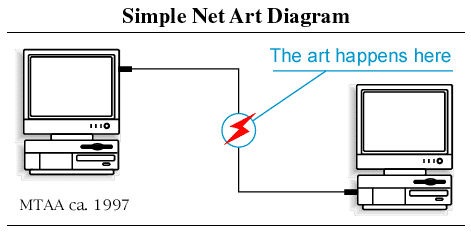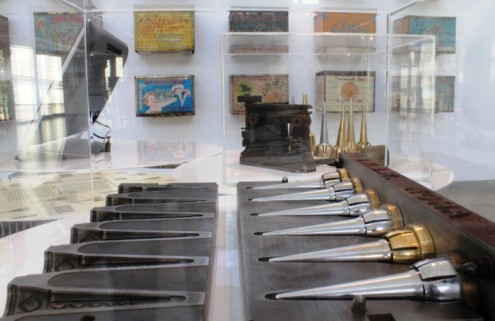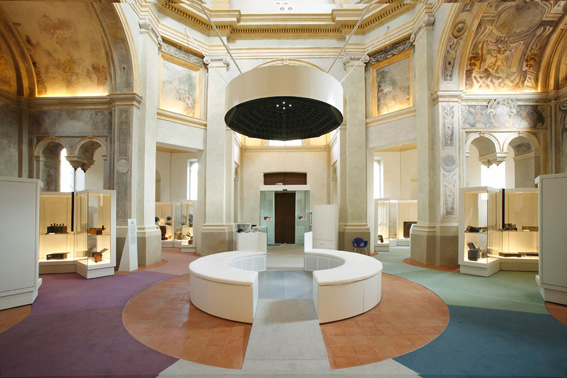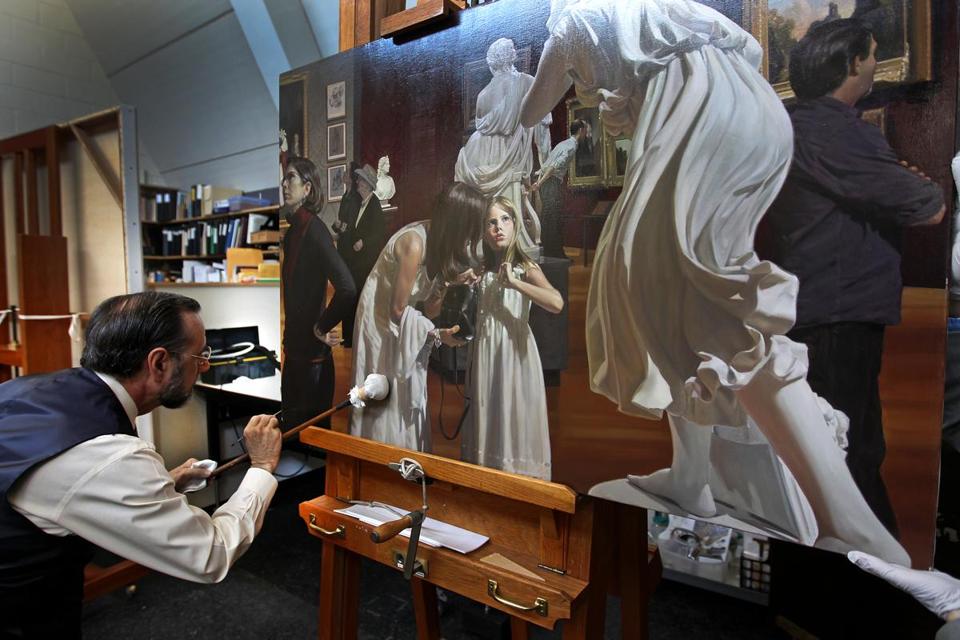This is part two of a two-part series about the net art network. The first part covered its beginnings and ideological basis. This post will look at how net art has evolved and the present landscape, drawing on new media theories and current artists’ exhibitions. Once a place of utopian possibility, current net artists see the internet as a root cause of today’s social, political, and economic inequalities.
An Introduction to the Net Art Network: Part 1
With more critiques of large internet companies gaining traction, people are beginning to question the hegemonic nature of the internet and the power structures that exist on the web, both of which define net art as school of thought. It is the work of net artists to develop, critique, and re-imagine the development of human experience as it relates to and exists on the web. This post gives an overview of net art and two examples of early net artists.
Connections and Gaps between Artists’ and Institutions’ New Media Preservation Efforts
Media art, which frequently involves data, software, or electronic devices, keeps facing the challenge of technological obsolescence. Since preservation and conservation are fields often dominated by museums and similar organizations, a contrast exists between personal and institutional practices. In some cases, artists rely on museums for technological support. This article looks at new media artists’ firsthand experiences and media artworks donated to the MoMA.
Opportunity or Challenge? Artificial Intelligence for Museum Audience Engagement
To improve museum operations, museum management is increasingly taking advantage of artificial intelligence (AI) technology to understand their collection data, their visitors, and their exhibitions. Audience engagement is one of the most significant factors that museums need to consider in their operations: it is an implicit element that connects people to collections and should be achieved based on a deep understanding of visitors, collections, and exhibitions. Within the past few years, AI technologies have shown their potential to bring previously inaccessible insights to museums based in three main areas: machine learning, chatbots, and neural networks.
Considering Biases in AI and the role of the Arts
The Role of Technology in Museums
With tools like beacons, iPads, touch screens, and haptic interfaces, technology provides museumgoers with detailed information, customized viewing experiences, and precise location mapping services. However, the use of digital technology in museums is often seen as a double-edged sword, which begs the question: does technology really belong in museums?
Redefining Boundaries at the Museum: Crowdsourced Exhibition at the Santa Cruz Museum of Art and History
Since December 19, 2014 the Santa Cruz Museum of Art and History has featured an exhibit of works relating to the ocean, with painting and sculptures by established artists alongside works by local residents. The exhibit includes a wide variety of art, ranging from professional artists’ works to two year-olds’ drawings. Everybody’s Ocean is a partially crowd-sourced and partially curated exhibition presenting everyone’s personal relationship with the sea.
Viewpoint of Billions
Wearable technology is all anyone is interested in talking about these days, and certainly AMT Lab is no different (for example, see Performing Arts in the Wearable Age). I’d like to take a brief interlude from gossiping about when Apple’s smart watch is going to drop to refocus on an “older” wearable technology: Google Glass.
Let me preface this by saying I am not an Explorer (or a Glasshole–whichever floats your boat) but as a casual observer of technology, I’ll jump at the chance to try something new. Like Google Glass. So when the National Portrait Gallery offered me (and the rest of DC) the chance to do just that, you bet I went for it.
Implementing a New Collection Management Application: Colección FEMSA
Colección FEMSA specializes in travelling exhibitions for Mexican and international institutions. A nine-person team manages all aspects of planning, from building crates and preventive conservation to facilitating partnerships with museums and other cultural organizations, culminating in up to twelve different shows each year. While a relatively small collection, the management challenge for this organization is having artwork constantly on the move. This case study concentrates on how Colección FEMSA meets this challenge through the help of a collection management application, Spaces for Art.
A Virtual Orchestra
The Australian Chamber Orchestra (ACO) has teamed up with Sydney digital media company Mod Productions to produce a new interactive “virtual orchestra” that is breaking down audience barriers in the music world. The resulting audio-visual installation, “ACO Virtual,” has created the means to bring the Orchestra outside the concert hall and into spaces where the ACO may not perform.
Health, Happiness and the Hospital Hallway: An Interactive LED Installation
At Great Ormond Street Hospital in London, a children’s hospital, designer Jason Bruges has installed an interactive exhibit that is truly on a child’s level. Bruges embedded 70 LED panels comprised of 72,000 LED lights in the walls of a long hallway leading to an operating theater where young patients undergo anesthesia and then surgery. On the walls, Bruges applied custom-designed, graphic wallpaper. The display is called ‘Nature Trail’ and animates different scenes and animals from nature using light patterns.
Crowd-Sourced Curating at the Brooklyn Museum
As the arts world continues to discuss and reconsider what it means to participate in the arts, the Brooklyn Museum is testing a new construct of audience engagement with its current exhibit GO: A Community-Curated Open Studio Project. GO combines two existing tactics: inviting the public into studios of working artists to see where and how artwork is made, and crowdsourcing the selection of that artwork through an open voting process. Unlike ArtPrize, an art competition in Grand Rapids, MI, that awards cash prizes to artists as determined by public vote (juried awards were added in 2012) and cited by the Brooklyn Museum as inspiration for the current exhibit, GO asks participants to nominate artists—rather than specific pieces—whose work they would like to see exhibited at the museum. The catch is that to be eligible to vote, participants must first visit at least five artist studios, which in turn requires that the museum be able to track where people go. The answer is a multiphase project begun this past September and culminating in an exhibit of Brooklyn artists, on display through February 24.
To participate, the museum first asked individuals to register on the GO community project website. Then, over a two-day open studio event involving nearly 1,800 artists in 46 Brooklyn neighborhoods, participants “checked-in” at each studio visited by way of a unique number displayed onsite. By sending that number to the museum either by text message, a free custom iPhone app, or the web, participants documented where they traveled. Those who checked-in at five or more studios received an email with instructions on how to vote, having earned the opportunity to nominate up to three artists. The museum tallied the results, sent two of its curators to review the work of the top ten nominated artists, and selected five to exhibit.
But GO didn’t stop when the voting was done. By asking participants to check-in, the museum was able to analyze how many people went where, when, and what platform they used to check-in, all of which was then shared in a series of posts on both the GO blog and through the Statistics section of the GO website. (Among those findings: Despite multiple mobile-friendly options designed especially for the event, nearly half of the 6,100+ participants chose to simply write down studio numbers throughout the day and check-in via the project website once back home, surprising project coordinators.) The website also provided a forum for participants to discuss (in real time and afterward) what they did and did not like about the process, share stories from their studio visits, learn about nominated artists, receive updates on the creation of the exhibit, and provide reactions to the final exhibit itself.
The exhibit has been criticized by some for not aptly representing the rich artistic quality Brooklyn holds, and is generating commentary on the age-old curatorial question of who should decide what constitutes “good” art. While a worthwhile debate, it seems to belie the larger point of the project: to expose people to the creative process, and ideally, to facilitate a better understanding of it. On that score, GO appears to have succeeded mightily. As project coordinators tagged entries in the Shared Stories section of the website, one of the most frequent themes to emerge was that of discovery. It seems that by opening studio doors, inviting people to participate in the curatorial process, and sharing reactions online, GO fostered meaningful interactions among artists, voters, volunteers, and museum staff, and in the process, created an innovative approach to engage audiences in the arts.
Looking at the Land: The Crowdsourced, Digital Exhibition from Flak Photo’s Andy Adams
He needs no introduction, but for new visitors to our site it is my pleasure to welcome back Andy Adams to Technology in the Arts.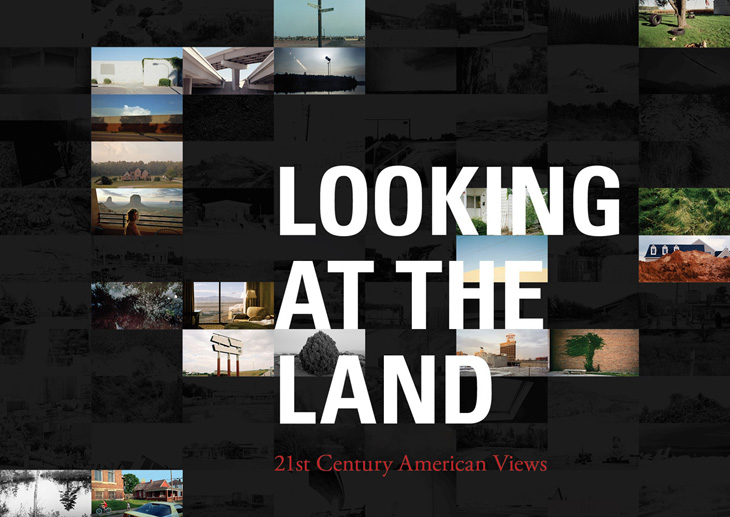 You may remember our conversation with Andy in May when we discussed the concept of Photo 2.0 and the role of Web 2.0 technologies in redefining the field of photography.
You may remember our conversation with Andy in May when we discussed the concept of Photo 2.0 and the role of Web 2.0 technologies in redefining the field of photography.
Andy’s newest success, “Looking at the Land: 21st Century American Views,” is a digital exhibition of 21st Century American Landscape photography. The exhibition, prepared in collaboration with the Museum of Art, Rhode Island School of Design, is a discussion (both in photographs and in interviews) with eighty-eight photographers on the practice and meaning of landscape photo-making in the 21st Century. On the website, Andy discusses the current status of the exhibition, including the presentation of twenty of the photographs in physical form at the FotoWeek DC 2012 festival.
Andy and I again had the chance to discuss the themes of photography and online-presenting, but this time focused on the process of organizing a digital exhibition, his experience with crowdsourcing creativity, and his thoughts on the effects of digital projection on viewing. While my full interview with Andy will be posted here on Technology in the Arts soon, I encourage you to view the online exhibition beforehand (available for viewing below).
[embed]http://vimeo.com/49855891[/embed]
Check back in next two weeks for more of Andy’s insight on the future of photography, digital exhibitions, and crowdsourcing creativity.
This Exquisite Forest: A Collaborative Project from Google Chrome and London's Tate Modern
Perhaps you played the French Surrealist game, ‘The Exquisite Corpse,’ in grammar school using the week’s vocabulary words or at a sleepover,  where someone inevitably managed to take the game in an inappropriate direction (wasn’t me, I swear).
If you do not recognize the creative exercise by its proper name, you will by its concept: a person begins a sentence or drawing on a piece of paper, covers their creation, passes the paper to the following person, and so the game continues until all participants have contributed. The final ‘masterpiece’ is often a comical, nonsensical, and potentially inappropriate, Dadaist anti-creation.
where someone inevitably managed to take the game in an inappropriate direction (wasn’t me, I swear).
If you do not recognize the creative exercise by its proper name, you will by its concept: a person begins a sentence or drawing on a piece of paper, covers their creation, passes the paper to the following person, and so the game continues until all participants have contributed. The final ‘masterpiece’ is often a comical, nonsensical, and potentially inappropriate, Dadaist anti-creation.
In July, Google’s Creative Lab teamed up with London’s Tate Modern Museum and launched the online collaborative project, “This Exquisite Forest.” Borrowing the game’s concept from the Surrealists, “This Exquisite Forest” enables users to draw or animate their own short animations (using Google Chrome browser) based on the initial “seeds” created by the artists Miroslaw Balka, Olafur Eliasson, Dryden Goodwin, Ragib Shaw, Julian Opie, Mark Titchner, Bill Woodrow, and Film4.0’s animators. One difference between the Surrealist’s version of the game and this project is the fact that online participants will have access to what was contributed before their own addition (as opposed to the Surrealist game where each participant's contribution is covered before moving on).
[embed]http://www.youtube.com/watch?feature=player_embedded&v=nnhJ1841K-8[/embed]
As users add their own animations and visual narratives using a web-based drawing tool, “the videos dynamically branch out and evolve, forming multiple new visuals.” From this idea- of initial videos or “seeds” planted by Tate’s artists- and the additional sequences branching out to create trees, this collaborative online project was coined “This Exquisite Forest.”
The project exists both in the digital realm and in the physical world. Large-scale projections of the best of the online contributions are displayed in the Level 3 gallery of the Tate Modern. In-house visitors have the opportunity to view the animations and contribute their own additions using digital drawing stations in the gallery.
“This Exquisite Forest” does three things expertly:
1) Allows museum-goers and web-users to become creators and curators, not just passive consumers of art
2) Provides a forum for the global, online community to collaborate creatively
3) Markets Google’s web browser Chrome, Google App Engine, and Google Cloud Storage
The physical installation at the Tate will run until January 2013 (approximately).
The Gelato Museum: I think a second visit is in order...
Ok, I’ll admit it; this post is probably less "best-practice" oriented than our typical Technology in the Arts publications. However, I guar antee it is more delicious, if that is of any consolation. Before heading to Bologna for the year, I crafted my list of “Must See and Do’s,” including both touristy and off-the-beaten track attractions. Occupying one of the top spots on my list (let’s just say it was either 1 or 2…) was the Gelato Museum Carpigiani. Yes, you read that correctly, a museum dedicated entirely to the history, culture and technology of gelato and gelato-making. Bliss.
It is a brand new museum, opening three weeks ago just outside the center of Bologna in Anzola dell’Emilia. Carpigiani is a brand, one of the leading producers of gelato-making equipment (actually, two gentlemen on the tour, also American, use Carpigiani machines in their gelateria in Colorado). The company also founded the Gelato University, based in Bologna but with satellite campuses around the world (Argentina, Germany, Japan, Italy, Netherlands, China, USA, Scotland, and England). Students interested in learning the artisan craft of gelato making and managing a gelateria can enroll in a variety of courses. Have I already looked into the details? You betcha.
antee it is more delicious, if that is of any consolation. Before heading to Bologna for the year, I crafted my list of “Must See and Do’s,” including both touristy and off-the-beaten track attractions. Occupying one of the top spots on my list (let’s just say it was either 1 or 2…) was the Gelato Museum Carpigiani. Yes, you read that correctly, a museum dedicated entirely to the history, culture and technology of gelato and gelato-making. Bliss.
It is a brand new museum, opening three weeks ago just outside the center of Bologna in Anzola dell’Emilia. Carpigiani is a brand, one of the leading producers of gelato-making equipment (actually, two gentlemen on the tour, also American, use Carpigiani machines in their gelateria in Colorado). The company also founded the Gelato University, based in Bologna but with satellite campuses around the world (Argentina, Germany, Japan, Italy, Netherlands, China, USA, Scotland, and England). Students interested in learning the artisan craft of gelato making and managing a gelateria can enroll in a variety of courses. Have I already looked into the details? You betcha.
The Carpigiani Gelato Museum is a center of cultural excellence dedicated to the understanding and study of the history, culture, and technology of gelato and the expertise of the innovators who drove its evolution over the centuries.
Back to the museum- pristine, modern, and FREE for visitors. It also exhibits the history of gelato cone-making and features an enormous wall of gelato-related quotes from the world’s greatest literary, historic, and cultural figures (think Marcel Proust and Madame Bovary). Tours are available in English.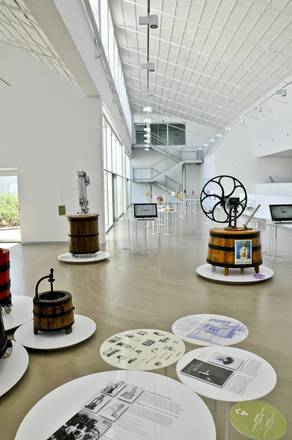
Carpigiani Gelato Museum, the first of its kind to delve into the history, culture, and technology of artisan gelato, a fresh, high-quality food that well represents Italian creativity and excellence throughout the world!
The following are a select few of the highlights from my tour:
- The organization of the exhibition: The museum charts the history of gelato, from 12000 B.C. to modern day. It is organized into color-coordinated epochs, so it is clear as you move through the exhibition when/where you are in its history.
- The exhibition offers varied media- over 20 original gelato-making machines, historical images and documents, and multimedia presentations.
- The exhibition on the history of cone-making, complete with antique cone shipping boxes from various manufacturers, was one of those "I-have-never-thought-about-the-history-of-cone-making-!" moments of brilliance.
- Each epoch is clearly defined- they form small clusters throughout the room. Above each cluster, to aid in the visitor’s visual understanding of the history, are authentic recipes of gelato (or whatever the frozen treat was before gelato became gelato) from that time period. Moving through the exhibit, visitors come to understand the evolution of gelato from a frozen drink of snow and wine for the wealthy and noble (few hanging recipes) to the universal treat (significantly more recipes) enjoyed more ubiquitously. It is a visually effective technique to compliment and emphasize the evolution of the consumption and creation of gelato.
- And last but most certainly not least, sampling. The tour culminates in the Carpigiani Gelato Lab aka the gelateria. They have a beautiful offering, ranging from traditional and popular flavors to flavors unique to the lab and ancient recipes. You can also arrange to celebrate your birthday in the lab (subtle hint to my friends and family...)
Yes, I was most excited by the fact I was at a museum dedicated to one of my guiltiest pleasures. But what I quickly came to appreciate more was that the history of gelato, something I had never actually considered while indulging, is forever preserved and accessible to the entire world. Gelato, ice cream, soft-serve, you name it, is for many, just a fun, summer treat. But for Italy and Bologna especially, the history and consumption of gelato is so central to their cultural and culinary traditions. As we chatted with the chef in the lab and he encouraged us to “focus” as we sampled flavors, I was reminded just how precious museums are to preserving our cultural heritage.
Cutting-Edge Sound Research from One of Italy's Oldest Cities
Greetings from Bologna, Italy! Having completed the Carnegie Mellon portion of my dual-Master’s degree program, I am now enrolled at the 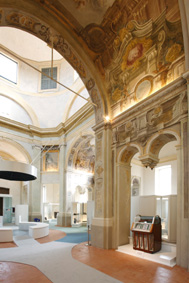 University of Bologna’s Master’s program in Innovation and Organization of Culture and the Arts (GIOCA), aka Cultural Economics. While my blog postings will not be as regular as this past year, I hope to share with our TitA followers relevant news, trends, and projects from across the Atlantic, beginning with la Casa del Suono (House of Sound), in Parma, Italy.
University of Bologna’s Master’s program in Innovation and Organization of Culture and the Arts (GIOCA), aka Cultural Economics. While my blog postings will not be as regular as this past year, I hope to share with our TitA followers relevant news, trends, and projects from across the Atlantic, beginning with la Casa del Suono (House of Sound), in Parma, Italy.
The House of Sound focuses on the technological aspects of sound. It is an avant-garde artistic and technological project dedicated to everyone who listens to music and other sounds broadcast by technological instruments. - Published in a guide by the instituto per i beni artistici culturali e naturali
Housed in a restored church and managed by the city of Parma, la Casa del Suono opened its doors to the public in December 2008. It is a project produced collaboratively by the Casa della Musica and the University of Parma. La Casa del Suono serves as an educational space with a scientific and artistic collection exhibiting the technological evolution and social implications of sound reproduction and transmission; as a research center providing instruments for innovative and futuristic developments, projects, and technologies; and as a leader in scientific and musical activity. In this way, it serves as both a museum and a laboratory.
The three best things about the museum:
1) It is a stunning, modern and bright space with incredible movement and flow. Its collection and layout are neither overwhelming nor perplexingly organized. It is rather simple, actually. There are six “niches” or round rooms (at one time, chapels). Each highlights a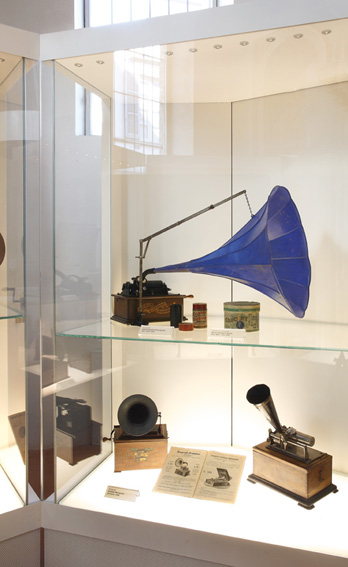 stage in the evolution of sound reproduction and transmission. Each niche houses about 10-14 sound reproduction and transmission devices, ranging from different countries’ first phonographs and radios to portable devices such as the compact disc and the iPod.
stage in the evolution of sound reproduction and transmission. Each niche houses about 10-14 sound reproduction and transmission devices, ranging from different countries’ first phonographs and radios to portable devices such as the compact disc and the iPod.
The niches are: (1) Reproduced Sound: From the Phonograph to the Gramophone (2) Transmitted Sound: The Birth of the Radio (3) Sound at Home: A New Household Appliance (4) Pocket Sound: From the Mobile to the Portable and (5) Sound for All: New Consumer Goods and (6) New Sound: From Analog to Digital.
2) Each niche contains an interactive touch screen from which visitors can select one of the technologies on display in the room and then a song from a set playlist of typical music from that period. The selected song is played throughout the niche, audible to visitors inside the specific niche, but not beyond.
3) The culmination of the visit is a demonstration of the research and technological advancements taking place at the Casa del Suono. Two installations, the Sonic Chandelier and the White Room, apply the theory of Wave Field Synthesis. The Sonic Chandelier uses technology that creates virtual sounds sources that move in the space above the listener. In the White Room, visitors experience the sound quality and movement of 189 speakers positioned at the same height along the perimeter of the room, creating a two-dimensional sonic field and a TRUE surround sound experience.
The Casa del Suono, aside from its architecturally supreme space, extensive collection, and cutting-edge research, asks visitors to think beyond “History of Rock 101” and the evolution of music. It has viewers reflect on sound--how people have historically received sound; how the evolution of transmitting sound and music has transformed family life, politics, and society; and how electronic technologies continue to shape access to culture, art, and science.
If you find yourself in the Emilia-Romagna region of Italy, the Casa del Suono is definitely worth a visit. It is an off-the-beaten track gem. And while you are in Parma for the day, treat yourself to a dish of the region’s pasta covered in Parma’s own parmigiano reggiano cheese. It will be a day for the books; you can trust me on that one.
A Little Sun, Solar Power, and Electricity: Olafur Eliasson at the Tate Modern
A little sunshine can go a long way, or at least, that’s what artist Olafur Eliasson has set out to prove. His exhibition, Little Sun, at the Tate Modern revolves around “solar power, the global energy challenge, light and its importance in and for life.” But at the center of it all, lies not the Sun, but a tiny solar powered lamp called a Little Sun! http://vimeo.com/41830924
Eliasson explains the Little Sun as follows:
Light is for everyone – it determines what we do and how we do it. This is why Frederik Ottesen and I have developed the solar-powered lamp Little Sun. Little Sun is a small work of art with a large reach. One part of the artwork is the lamp and the activities it enables. The other is the successful distribution of Little Sun in off-grid communities, its journey from production to usage.
In some households, there will be a Little Sun that beams during the night. The lamp is also being sold at the Tate Modern and with every purchase, it will be made available at a lower price to those who do not have access to electricity. Furthermore, visitors will be able to create light graffiti using the Little Sun! Yet the luckiest will be those who participate in a blackout event in the Surrealism galleries and use their lamps to see the art!
http://vimeo.com/45573593
But once the lights are turned back on, it’s important to note that Little Sun is not just an exhibition, it’s a for profit company! One that seeks to expand its distribution networks into the depths of darkness to bring electricity, prosperity, and economic growth to all.
Their business model is similar to TOMs in that they will provide a reduced price Little Sun to off-grid communities for every lamp that is bought. Some additional points regarding their business goals are mentioned below:
We will ensure that Little Sun is made available where typical commercial interests would not reach.
We will focus our energy on the point where the need is most: where electricity is unavailable, unreliable, unaffordable, or unsustainable.
We will drive profit to this point of need – far beyond where industry normally goes.
We will help create and nurture small sustainable businesses by supplying them with Little Suns and providing the support they need to create profit.
We aim to make light, energy, and profits available everywhere.
Little Sun is a stellar example of a project that spans the fields of art, science, and business! Here’s to a little sunshine going a long, long way!
Museum Laboratories and Chrome Experiments!
It truly is difficult to write about an experiment untested with a hypothesis unknown, and in a lab unseen. But I’ll make an exception because Google is the scientist behind it. All that we know about the Chrome Web Lab, we know because of a minute long YouTube video: http://www.youtube.com/watch?v=Bhs0YHUPV24
“See the magic of the web brought to life through 5 Chrome Experiments.
Open to the world online. Live from the Science Museum, London.
Launching in beta, summer 2012.”
Instead of making grandiose, naive, and most likely, faulty predictions, all I will say is that where there is Google, there is oodles and doodles of interesting innovation. So this participatory exhibition at the London Museum of Science is one to experience and experiment with.
Coincidentally, another equally experimental space, called the Laboratory for Museum Innovation, is in the works at the Dallas Museum of Art. Having secured $300,000 in funding, the lab will soon launch a round of pilot projects designed to address museological issues such as : Access to Collections; Visitor Engagement and Participatory Culture; Advancing Digital Scholarship; and Transformative Infrastructure. The following was mentioned in DMA’s press release:
“The Laboratory will mount a series of short-term pilot projects that will investigate and focus on enhancing educational resources for K-12 students and teachers; expanding data and information on its collections to aid scholars and visitors; deepening understanding of how visitors encounter works of art; and improving global distribution of content from the Museum and its audiences.”
It’s going to be a summer of scientific experimentation in museums. A fine meeting of cultural and statistical significance!
The Meta-Museum: A Work of Art Depicting Museum Visitors Admiring a Work of Art
Before you head off on summer holiday, take a look at the newest addition to the Museum of Fine Art, Boston’s, Arts of the Americas wing. Warren Prosperi’s realist painting, “Museum Epiphany III,” depicts museum visitors amid the 19th-century paintings and sculptures in the Penny and Jeff Vinik Gallery of the Museum.
Those years I spent studying and copying at the MFA, I got to see the life of the museum. There’s different types of people who are always moving through the gallery. At one point I said, “All this vibrant life in the museum is a painting in and of itself.” So I started a group of paintings about the works of art, and the museumgoers, and their relationship to each other. - Warren Prosperi in a Boston Globe interview
“Museum Ephiphany I” and “Museum Ephiphany II” also feature specific locations in the Museum and were purchased by Museum trustee, David Croll. “Museum Epiphany III” will be one in a series of potentially 25 paintings.
What a turn of events when visitors become the subject of the art they view.
(Photo courtesy: David L. Ryan/Globe Staff)
The Space: A Summer of English Arts on a New Experimental Platform
This Olympiad summer, the arts in the UK will be consolidated onto a single online platform called The Space. What’s more? The content on The Space is being provided for free! There’s room, or more fittingly, seats for all, at venues such as the World Shakespeare Festival or Yayoi Kusama’s Obliteration Room at the Tate.
“The Space is a new way to access and experience all of the arts – for free.Available on computer, tablet, smartphone and connected TV, The Space invites you to take part in the biggest summer of arts the UK has ever seen, whenever you want it and wherever you happen to be. ”
 The Arts Council England in partnership with the BBC created The Space as a way for people from all over the world to experience the country’s rich and dynamic arts scene. In effect, a summer of English arts to all! (Albeit without the English summer and its cool Constable Skies). So The Space is certainly something to look forward too because it will feature some of the UK’s best theatrical productions, dances, musical performances, art exhibits, poetry readings, along with content that has been specifically created for the platform.
The Arts Council England in partnership with the BBC created The Space as a way for people from all over the world to experience the country’s rich and dynamic arts scene. In effect, a summer of English arts to all! (Albeit without the English summer and its cool Constable Skies). So The Space is certainly something to look forward too because it will feature some of the UK’s best theatrical productions, dances, musical performances, art exhibits, poetry readings, along with content that has been specifically created for the platform.
Through the course of the summer, the performances staged in theatre, dance, film, and music will be showcased via recordings and live streaming while exhibitions at museums and galleries will be presented via behind-the-scenes footage, photographs, and interviews with artists and curators. The Space will also feature experimental and interactive digital art that can be experienced on the platform itself. Finally, for poetry and literature, there will be a variety of formats, including podcasts, poetry readings, and interactive audio-visual timelines such as the 60 Years in 60 Poems.
While live streaming and online exhibits aren’t entirely new to the performing or visual arts, the presentation of all the arts, all at once, and in one place, is certainly a novelty. As such, The Space is truly remarkable because it is no ordinary task to fit an entire country’s arts scene onto a single platform! If other countries too made their arts available on interactive, well designed platforms, the internet would surely be a destination in itself. Perhaps the introduction of The Space suggests that it already is?!
The Space also signals another significant trend; the quality of arts being made available online continues to improve. Whether it is in opera, film, or even, educational art history, we are privy to some great material. At the same time, the problem with the online format is that there are times when our Google searches are less than serendipitous and our social networks less than social. On such days, we miss out on a lot of online events, projects, and experiments.
Yet on The Space, what will remain certain is most certainly the art. And at the end of each adequately sunny day across the Atlantic, the platform will be populated with new content for visitors to see, hear, read, and experience. Moreover, the content on this living library of the arts will be available until October. After that, it will be time, once again, to continue our search for the arts on the virtual infinity of the internet (The outer Space).


